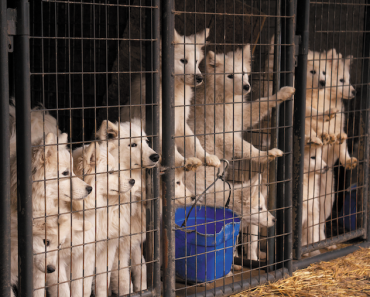
Carbon monoxide does not have a smell, color or taste, but it is highly toxic to dogs. This harmful gas can cause poisoning in our canine companions and lead to life-threatening symptoms. The sooner pet parents notice the signs and seek treatment for their pets, the better.
Signs of carbon monoxide poisoning in dogs
Carbon monoxide poisoning in dogs causes a variety of symptoms. The most common characteristic manifests as bright red discoloration of the skin and gums. All signs of carbon monoxide poisoning in dogs include:
- Bright red discoloration of skin and gums
- Decreased energy
- Drowsiness
- Vomiting
- Behavioral changes, such as aggression
- Weakness or collapse
- Incoordination or stumbling
- High heart rate
- Difficulty breathing
- Tremors or seizures
- Death
Carbon monoxide poisoning rates as especially problematic for dogs with pre-existing conditions, such as heart or respiratory diseases. These dogs can develop severe symptoms very quickly, even with low levels of exposure.
Causes of carbon monoxide poisoning in dogs
Dogs can be exposed to carbon monoxide from a few different sources. Gas appliances, such as water heaters, stoves and furnaces may leak this toxic gas if they are not working properly. Space heaters can also be problematic, especially if they are used in small, enclosed rooms without adequate ventilation. Car exhaust contains carbon monoxide and may be breathed in by dogs left in the garage while a car is running. Additionally, many dogs diagnosed with smoke inhalation following a house fire suffer from carbon monoxide poisoning.
Treatment for carbon monoxide poisoning in dogs
If your dog has been exposed to carbon monoxide, move him to an area with fresh air immediately. Once in a safe place, contact your veterinarian for guidance.
Dogs exposed to carbon monoxide will receive supplemental oxygen at the veterinary hospital. Many dogs need to be placed inside a hyperbaric oxygen chamber. This is a pressurized enclosure filled with a high percentage of oxygen. It removes the carbon monoxide from the blood so that dogs can breathe better. Dogs with severe symptoms may need to be placed on a ventilator if they cannot breathe on their own.
Most dogs need hospitalization for several days for supportive care and monitoring. They are given intravenous fluids and other necessary medications for the symptoms they are experiencing, such as anticonvulsants for seizures or antinausea medications for vomiting.
Carbon monoxide poisoning in dogs: prevention
Although a serious concern for dogs, you can prevent carbon monoxide poisoning.
- Never leave your dogs in the garage while the car is running or in any enclosed area where gas appliances or heaters are located.
- Equip your home with functioning carbon monoxide detectors to catch gas leaks before levels in the home become dangerously high.
Seek veterinary care immediately
If you suspect your dog has been exposed to carbon monoxide, bring him to the veterinarian immediately. Early intervention is critical for a positive outcome and quick recovery.


























